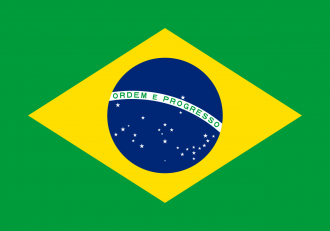The Federative Republic of Brazil, known as Brazil, is the largest and most populated country in South and Latin America, and one of the most economically advanced countries in the world. It spans over an area of 8,358,140 km2 and has a population of some 205.8 million (2016), with Portuguese being the official language. With a total coastline of about 7,500 km, the country is wet to the east by the Atlantic Ocean.
Brazil shares borders to the west with Uruguay, Argentina, Paraguay, Bolivia, Peru, to the northwest with Colombia, and to the north with Venezuela, Guyana, Suriname and French Guiana. The only South American countries that do not neighbour with Brazil, are Chile and Ecuador.
Brazil is particularly abundant in rivers and boasts eight major drainage basins, directing their water into the Atlantic Ocean. While the Amazon River carries about 20% of the world’s fresh water, the Amazon’s rainforest is home to about a third of all known animal species, making up about half of the world’s rainforests.
The country’s capital Brasilia, is the fourth most populated city, with about 4.2 million inhabitants, trailing behind Sao Paulo (about 21 million), Rio de Janeiro (about 12.9 million) and Belo Horizonte (about 5.7 million).
Brazil has developed to a large extent the agricultural, manufacturing, mining (being rich in natural resources such as gold, iron, manganese, bauxite, phosphates, petroleum, platinum and timber), as well as service sectors. In addition, its versatile nature -shores consisting of mangroves, lagoons and coral reefs- and the rich culture, in conjunction with modern infrastructure/amenities, have turned Brazil into a prominent touristic destination, with São Paulo and Rio de Janeiro accounting for the lion’s share.
During the 2003-2014 period, the economic and social progress of the country, helped towards the significant reduction of inequalities and to lift some 29 million people out of poverty. However, despite the immense economic development of Brazil, social problems and inequalities of the country have not been eradicated; in fact, with poverty rate having stagnated since 2015, a wide gap between the rich and the poor still exists. According to the Gini coefficient inequality indicator, the country registered 0.515 in the relevant index for 2014.
On the other hand, Brazil’s HDI value for 2015 was 0.754 –indicating the country’s inclusion in the high human development category-, increased by 23.4% since 1990, positioning the country as 79th out of 188 countries examined, for that year.

